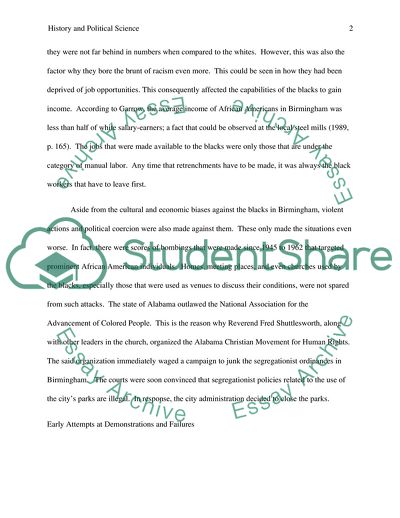Cite this document
(The Conditions Prior to the Storm Research Paper Example | Topics and Well Written Essays - 2250 words, n.d.)
The Conditions Prior to the Storm Research Paper Example | Topics and Well Written Essays - 2250 words. https://studentshare.org/sociology/1765769-civil-rights-demonstration-in-birmingham-alabama
The Conditions Prior to the Storm Research Paper Example | Topics and Well Written Essays - 2250 words. https://studentshare.org/sociology/1765769-civil-rights-demonstration-in-birmingham-alabama
(The Conditions Prior to the Storm Research Paper Example | Topics and Well Written Essays - 2250 Words)
The Conditions Prior to the Storm Research Paper Example | Topics and Well Written Essays - 2250 Words. https://studentshare.org/sociology/1765769-civil-rights-demonstration-in-birmingham-alabama.
The Conditions Prior to the Storm Research Paper Example | Topics and Well Written Essays - 2250 Words. https://studentshare.org/sociology/1765769-civil-rights-demonstration-in-birmingham-alabama.
“The Conditions Prior to the Storm Research Paper Example | Topics and Well Written Essays - 2250 Words”. https://studentshare.org/sociology/1765769-civil-rights-demonstration-in-birmingham-alabama.


